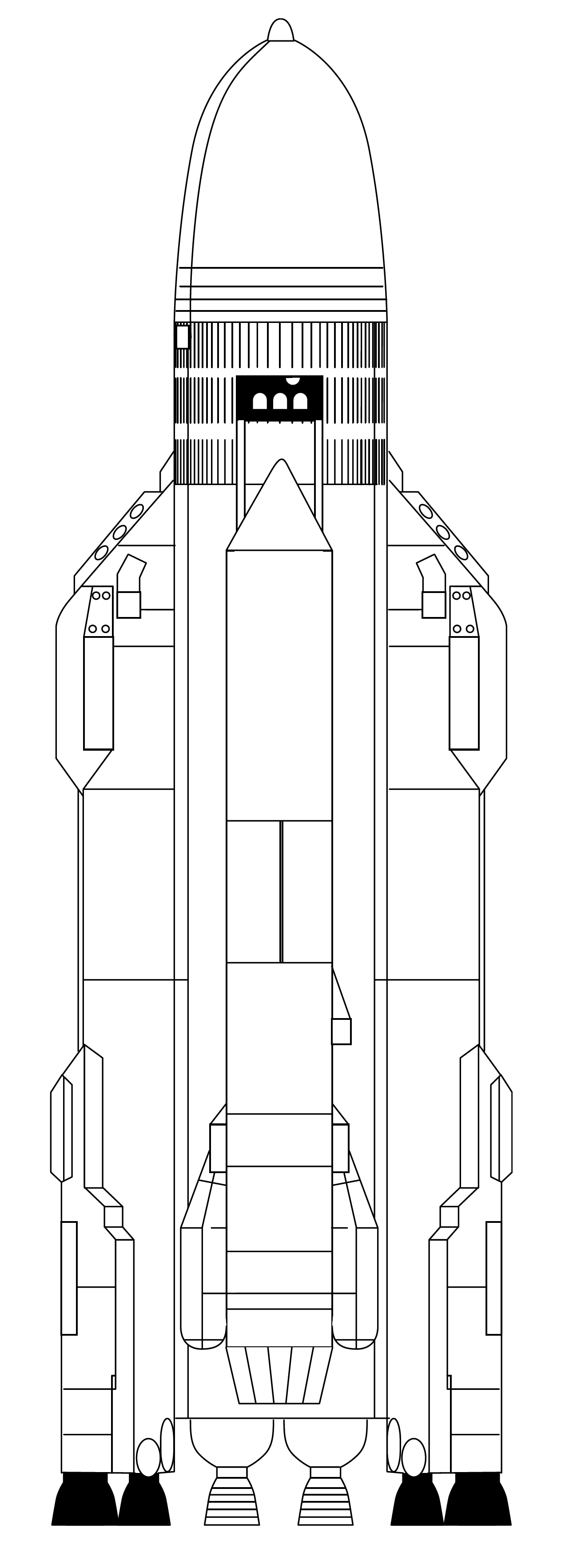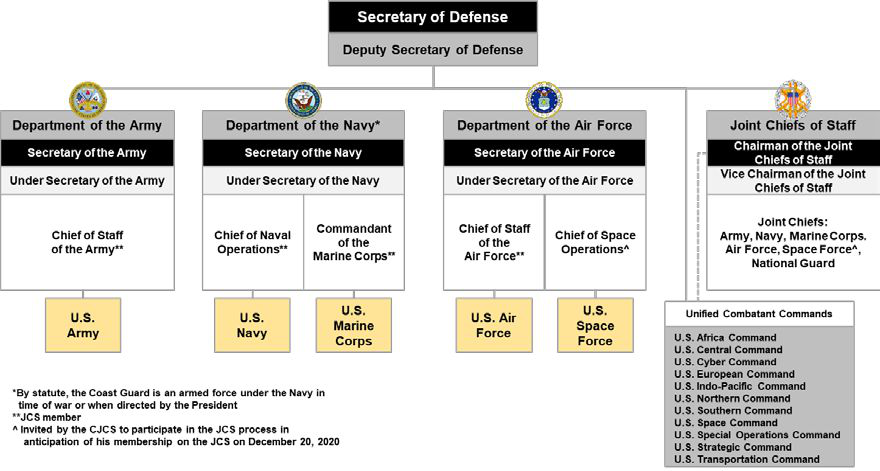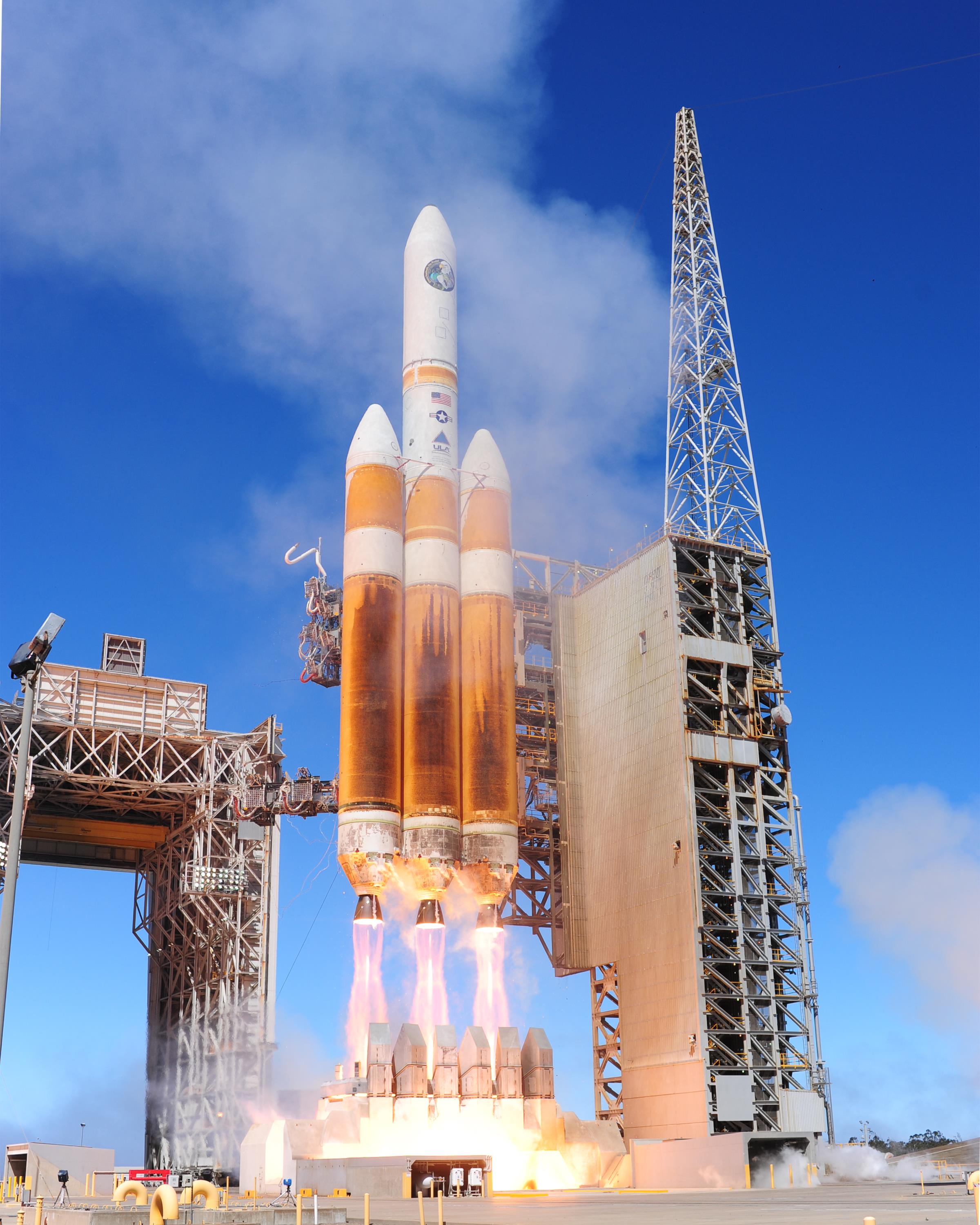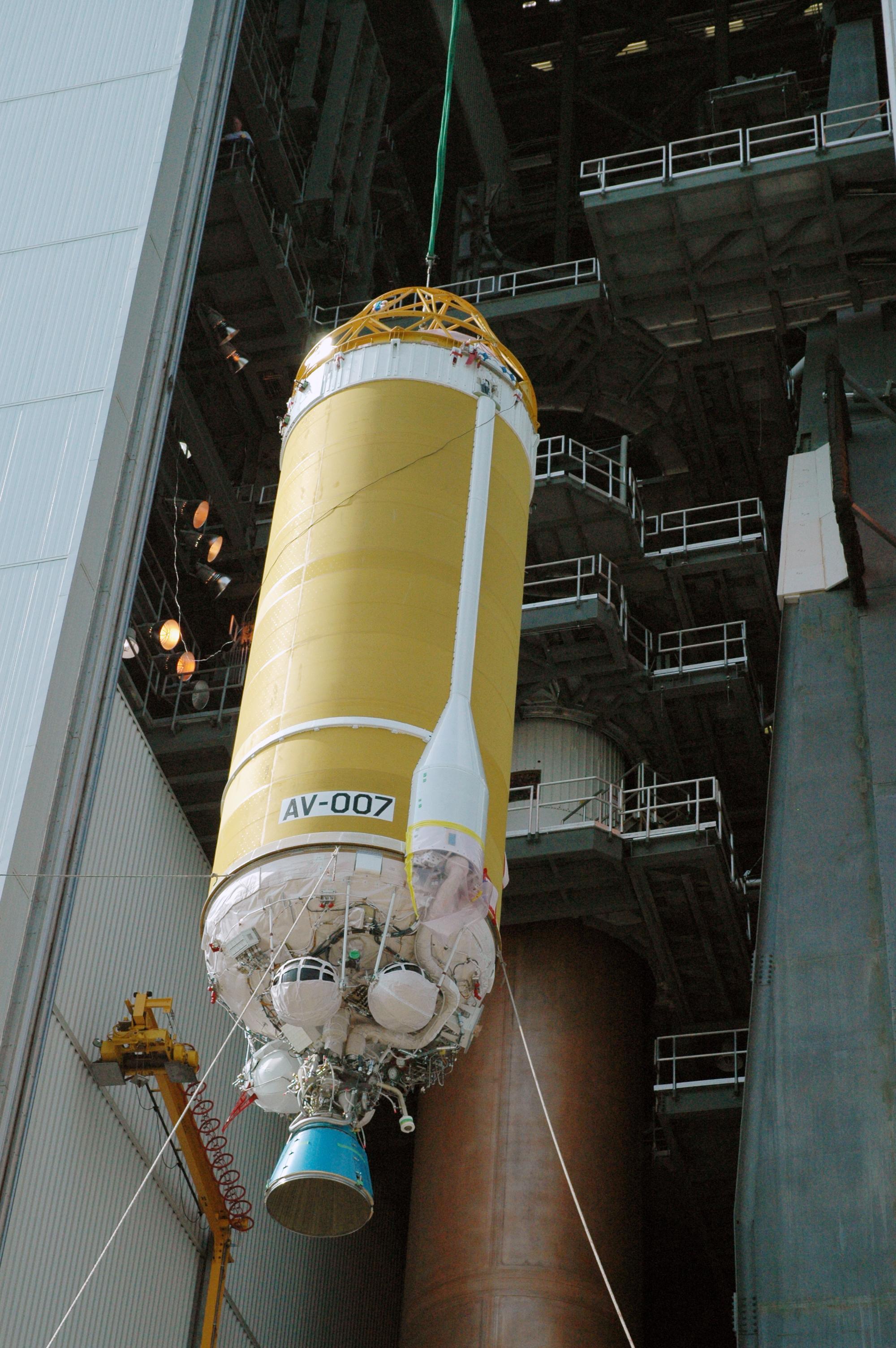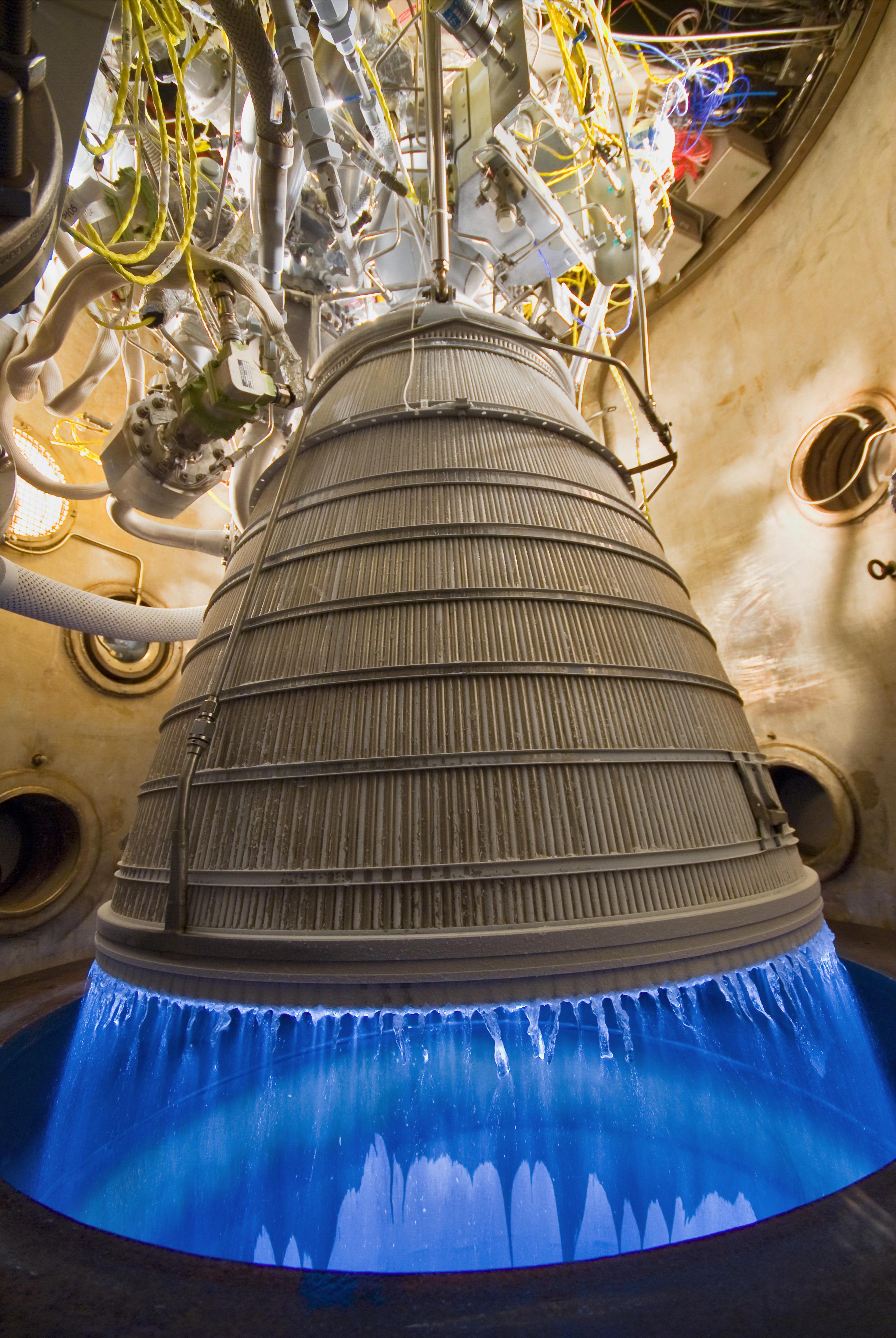|
Vulcan Centaur
Vulcan Centaur is a heavy-lift launch vehicle developed and operated by United Launch Alliance (ULA). It is a two-stage-to-orbit launch vehicle consisting of the Vulcan first stage and the Centaur second stage. Replacing ULA's Atlas V and Delta IV rockets, the Vulcan Centaur is principally designed to meet the needs of the National Security Space Launch (NSSL) program, which supports U.S. intelligence agencies and the Defense Department, but ULA believes it will also be able to price missions low enough to attract commercial launches. ULA began development of the new launch vehicle in 2014, primarily to compete with SpaceX’s Falcon 9 and to comply with a Congressional mandate to phase out the use of the Russian-made RD-180 engine that powered the Atlas V. The first launch of the Vulcan Centaur was initially scheduled for 2019 but faced multiple delays due to developmental challenges with its new BE-4 first-stage engine and the Centaur second-stage. The Vulcan Centaur had ... [...More Info...] [...Related Items...] OR: [Wikipedia] [Google] [Baidu] |
BE-4
The BE-4 (Blue Engine 4) is a liquid rocket engine developed by Blue Origin. It uses an oxygen-rich, liquefied natural gas, liquefied methane fuel and operates on a staged combustion cycle. The BE-4 produces of thrust at sea level. Development of the BE-4 was funded through a combination of private investment and public contracts. Although initially intended solely for use on Blue Origin's proprietary launch vehicle, the New Glenn, the engine was also selected in 2014 by United Launch Alliance (ULA) for its Vulcan Centaur rocket, which replaces the Atlas V. ULA finalized the BE-4 as its choice in September 2018. The BE-4 made its first flight aboard the Vulcan Centaur rocket on Peregrine Mission One, 8 January 2024. It later launched on New Glenn for the first time on 16 January 2025. History Following Aerojet, Aerojet's acquisition of Pratt & Whitney Rocketdyne in 2012, Blue Origin president Rob Meyerson saw an opportunity to fill a gap in the defense industrial base. Blue ... [...More Info...] [...Related Items...] OR: [Wikipedia] [Google] [Baidu] |
Energia (rocket)
Energia (; GRAU 11K25) was a 1980s super-heavy lift launch vehicle. It was designed by NPO Energia of the Soviet Union as part of the Buran programme, Buran program for a variety of payloads including the Buran (spacecraft), Buran spacecraft. Control system main developer enterprise was the Khartron NPO "Electropribor". The Energia used four strap-on boosters each powered by a four-chamber RD-170 engine burning kerosene/Liquid oxygen, LOX, and a central core stage with four single-chamber RD-0120 (11D122) engines fueled by liquid hydrogen/LOX. The launch vehicle had two functionally different operational variants: Energia-Polyus, the initial test configuration, in which the Polyus (spacecraft), Polyus system was used as a final stage intended to put the payload into orbit, and Energia-Buran, in which the Buran programme, ''Buran'' orbiter was the payload and the source of the orbit insertion impulse. The launch vehicle had the capacity to place about 100 tonnes in Low Earth orbit ... [...More Info...] [...Related Items...] OR: [Wikipedia] [Google] [Baidu] |
Aluminium
Aluminium (or aluminum in North American English) is a chemical element; it has chemical symbol, symbol Al and atomic number 13. It has a density lower than that of other common metals, about one-third that of steel. Aluminium has a great affinity towards oxygen, passivation (chemistry), forming a protective layer of aluminium oxide, oxide on the surface when exposed to air. It visually resembles silver, both in its color and in its great ability to reflect light. It is soft, magnetism, nonmagnetic, and ductility, ductile. It has one stable isotope, 27Al, which is highly abundant, making aluminium the abundance of the chemical elements, 12th-most abundant element in the universe. The radioactive decay, radioactivity of aluminium-26, 26Al leads to it being used in radiometric dating. Chemically, aluminium is a post-transition metal in the boron group; as is common for the group, aluminium forms compounds primarily in the +3 oxidation state. The aluminium cation Al3+ ... [...More Info...] [...Related Items...] OR: [Wikipedia] [Google] [Baidu] |
Falcon 9
Falcon 9 is a Reusable launch system#Partial reusable launch systems, partially reusable, two-stage-to-orbit, medium-lift launch vehicle designed and manufactured in the United States by SpaceX. The first Falcon 9 launch was on June 4, 2010, and the first commercial resupply mission to the International Space Station (ISS) launched on October 8, 2012. In 2020, it became the first commercial rocket to launch humans to orbit. The Falcon 9 has been noted for its reliability and high launch cadence, with successful launches, two in-flight failures, one partial failure and one pre-flight destruction. It is the most-launched American orbital rocket in history. The rocket has two-stage-to-orbit, two stages. The first (booster) stage carries the second stage and payload to a predetermined speed and altitude, after which the second stage accelerates the payload to its target orbit. The Booster (rocketry), booster is capable of Vertical takeoff, vertical landing, landing vertically to fa ... [...More Info...] [...Related Items...] OR: [Wikipedia] [Google] [Baidu] |
United States Department Of Defense
The United States Department of Defense (DoD, USDOD, or DOD) is an United States federal executive departments, executive department of the federal government of the United States, U.S. federal government charged with coordinating and supervising the six U.S. armed services: the United States Army, Army, United States Navy, Navy, United States Marine Corps, Marines, United States Air Force, Air Force, United States Space Force, Space Force, the United States Coast Guard, Coast Guard for some purposes, and related functions and agencies. As of November 2022, the department has over 1.4 million active-duty uniformed personnel in the six armed services. It also supervises over 778,000 National Guard (United States), National Guard and reservist personnel, and over 747,000 civilians, bringing the total to over 2.91 million employees. Headquartered at the Pentagon in Arlington County, Virginia, just outside Washington, D.C., the Department of Defense's stated mission is "to provid ... [...More Info...] [...Related Items...] OR: [Wikipedia] [Google] [Baidu] |
National Security Space Launch
National Security Space Launch (NSSL) is a program of the United States Space Force (USSF) intended to assure access to space for United States Department of Defense and other Federal government of the United States, United States government payloads. The program is managed by the Assured Access to Space Directorate (SSC/AA) of the Space Force's Space Systems Command (SSC), in partnership with the National Reconnaissance Office. Started in 1994 as the Evolved Expendable Launch Vehicle Launch vehicle, launch system program, the initial program goal was to make government space launches more affordable and reliability engineering, reliable, leading to the development of the Boeing Delta IV and Lockheed Martin Atlas V EELV families. These remained the primary launch vehicles for U.S. military satellites, and were later joined by the Falcon 9 developed by SpaceX. On 1 March 2019, the program name was changed from EELV to National Security Space Launch (NSSL) to better reflect the grow ... [...More Info...] [...Related Items...] OR: [Wikipedia] [Google] [Baidu] |
Delta IV
Delta IV was a group of five expendable launch systems in the Delta rocket family. It flew 45 missions from 2002 to 2024. Originally designed by Boeing's Defense, Space and Security division for the Evolved Expendable Launch Vehicle (EELV) program, the Delta IV became a United Launch Alliance (ULA) product in 2006. The Delta IV was primarily a launch vehicle for United States Air Force (USAF) military payloads, but was also used to launch a number of United States government non-military payloads and a single commercial satellite. The Delta IV had two main versions which allowed the family to cover a range of payload sizes and masses: the Medium (which had four configurations) and Heavy. The final flight of Medium occurred in 2019. The final flight of Heavy was in April 2024. Delta IV vehicles were built in the ULA facility in Decatur, Alabama. Final assembly was completed at the launch site by ULA: at the horizontal integration facility for launches from SLC-37B pad at ... [...More Info...] [...Related Items...] OR: [Wikipedia] [Google] [Baidu] |
Atlas V
Atlas V is an expendable launch system and the fifth major version in the Atlas (rocket family), Atlas launch vehicle family. It was developed by Lockheed Martin and has been operated by United Launch Alliance (ULA) since 2006. Primarily used to launch payloads for the United States Department of Defense, NASA, and commercial customers, Atlas V is the longest-serving active rocket in the United States. Each Atlas V vehicle consists of two main stages. The First stage (rocketry), first stage is powered by a single Russian-made RD-180 engine that burns kerosene and liquid oxygen. The Centaur (rocket stage), Centaur upper stage uses one or two American-made Aerojet Rocketdyne RL10 engines that burn liquid hydrogen and liquid oxygen. Strap-on booster, Strap-on Solid rocket booster, solid rocket boosters (SRBs) are used in several configurations. Originally equipped with AJ-60A SRBs, the vehicle switched to Graphite-Epoxy Motor (GEM 63) boosters beginning in November 2020, except for ... [...More Info...] [...Related Items...] OR: [Wikipedia] [Google] [Baidu] |
Centaur (rocket Stage)
The Centaur is a family of rocket propelled upper stages that has been in use since 1962. It is currently produced by U.S. launch service provider United Launch Alliance, with one main active version and one version under development. The diameter Common Centaur/Centaur III flies as the upper stage of the Atlas V launch vehicle, and the diameter Centaur V has been developed as the upper stage of ULA's new Vulcan rocket. Centaur was the first rocket stage to use liquid hydrogen (LH2) and liquid oxygen (LOX) propellants, a high-energy combination that is ideal for upper stages but has significant handling difficulties. Characteristics Common Centaur is built around stainless steel pressure stabilized balloon propellant tanks with thick walls. It can lift payloads of up to . The thin walls minimize the mass of the tanks, maximizing the stage's overall performance. A common bulkhead separates the LOX and LH2 tanks, further reducing the tank mass. It is made of two stainless ... [...More Info...] [...Related Items...] OR: [Wikipedia] [Google] [Baidu] |
Two-stage-to-orbit
A two-stage-to-orbit (TSTO) or two-stage rocket is a launch vehicle in which two distinct multistage rocket, stages provide propulsion consecutively in order to achieve orbital velocity. It is intermediate between a three-stage-to-orbit launcher and a hypothetical single-stage-to-orbit (SSTO) launcher. At liftoff the first stage is responsible for accelerating the vehicle. At some point the second stage detaches from the first stage and continues to orbit under its own power. An advantage of such a system over single-stage-to-orbit is that most of the dry mass of the vehicle is not carried into orbit. This reduces the cost involved in reaching orbital velocity, as much of the structure and engine mass is ejected, and a larger percentage of the orbited mass is payload mass. An advantage over three or more stages is a reduction in complexity and fewer separation events, which reduces cost and risk of failure. Examples * Historical ** Cosmos-3M ** Delta IV Medium ** Falcon 1 ** ... [...More Info...] [...Related Items...] OR: [Wikipedia] [Google] [Baidu] |
Heavy-lift Launch Vehicle
A heavy-lift launch vehicle (HLV) is an orbital launch vehicle capable of lifting payloads between (by NASA classification) or between (by Russian classification) into low Earth orbit (LEO).50t payloads" Heavy-lift launch vehicles often carry payloads into higher-energy orbits, such as geosynchronous transfer orbit (GTO) or heliocentric orbit (HCO). An HLV is between a medium-lift launch vehicle and a super heavy-lift launch vehicle. History and design Government The first heavy-lift launch vehicles in the 1960s included the US Saturn IB and the Soviet Proton. Saturn IB was designed to carry the Apollo spacecraft into orbit and had increased engine thrust and a redesigned second stage from its predecessor. Proton was originally designed to be a large intercontinental ballistic missile (ICBM). Russia still operates variants of the Proton , although it is expected to be phased out in favor of the Angara A5. NASA introduced the Space Shuttle as the first partially reusab ... [...More Info...] [...Related Items...] OR: [Wikipedia] [Google] [Baidu] |
RL10
The RL10 is a liquid-fuel cryogenic rocket engine built in the United States by Aerojet Rocketdyne that burns cryogenic liquid hydrogen and liquid oxygen propellants. Modern versions produce up to of thrust per engine in vacuum. RL10 versions were produced for the Centaur upper stage of the Atlas V and the DCSS of the Delta IV. More versions are in development or in use for the Exploration Upper Stage of the Space Launch System and the Centaur V of the Vulcan rocket. The expander cycle that the engine uses drives the turbopump with waste heat absorbed by the engine combustion chamber, throat, and nozzle. This, combined with the hydrogen fuel, leads to very high specific impulses (''I''sp) in the range of in a vacuum. Mass ranges from depending on the version of the engine. History The RL10 was the first liquid hydrogen rocket engine to be built in the United States, with development of the engine by Marshall Space Flight Center and Pratt & Whitney beginning in the 195 ... [...More Info...] [...Related Items...] OR: [Wikipedia] [Google] [Baidu] |
